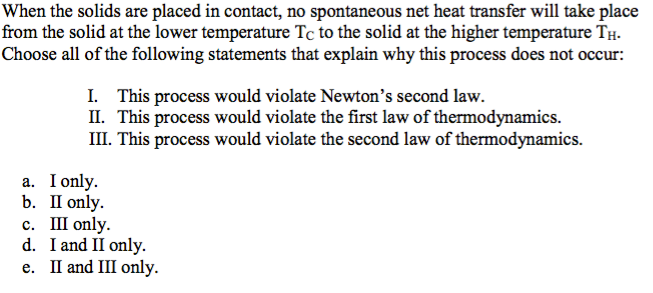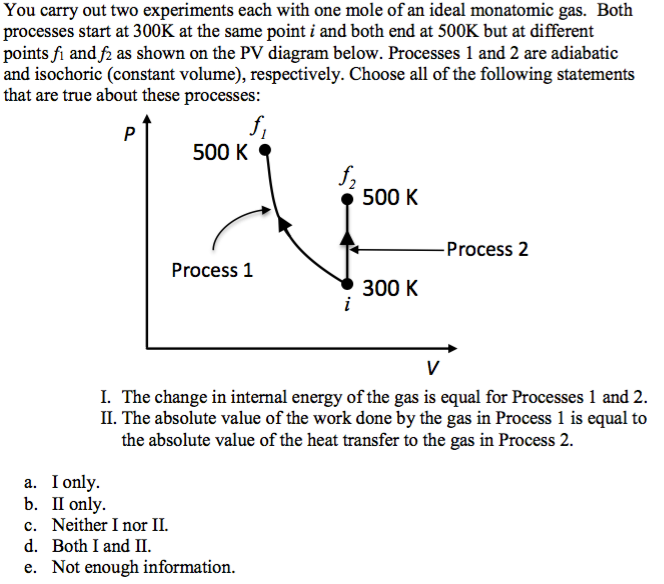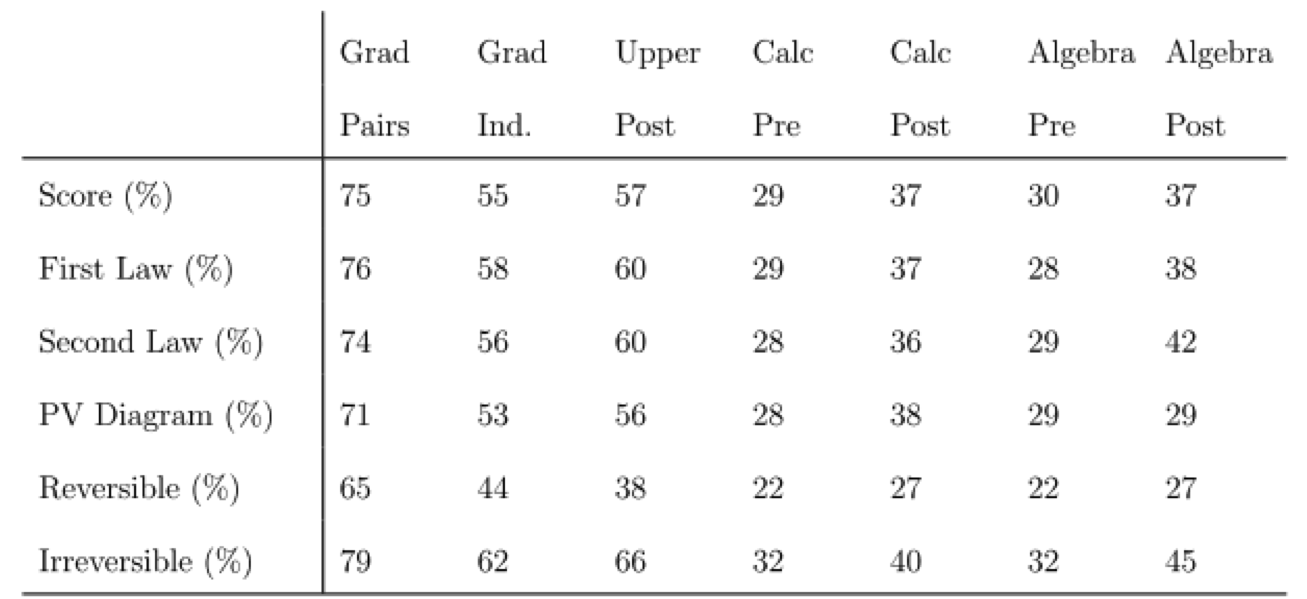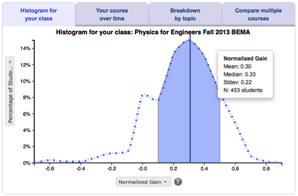Developed by Benjamin Brown and Chandralekha Singh
| Purpose | To measure the effectiveness of traditional and/or research-based techniques of teaching the first and second laws of thermodynamics and thermodynamic processes. |
|---|---|
| Format | Pre/post, Multiple-choice |
| Duration | 40 min |
| Focus | Thermal / Statistical Content knowledge (first law of thermodynamics, second law of thermodynamics, PV diagrams, reversible processes, irreversible processes) |
| Level | Intro college |
Sample questions from the STPFaSL-Short:


STPFaSL-short Implementation and Troubleshooting Guide
Everything you need to know about implementing the STPFaSL-short in your class.
Login or register to download the implementation guide.
more details
This is the second highest level of research validation, corresponding to at least 5 of the validation categories below.
Research Validation Summary
Based on Research Into:
- Student thinking
Studied Using:
- Student interviews
- Expert review
- Appropriate statistical analysis
Research Conducted:
- At multiple institutions
- By multiple research groups
- Peer-reviewed publication
The multiple-choice questions on the STPFaSL-short were developed by consulting with instructors of introductory courses about topics and content goals, as well as materials for these courses, and completing literature review of student difficulties with relevant topics. A preliminary distribution of questions from various topics was developed in consultation with instructors. Free-response versions of the questions were then given to students, and the responses used to create the multiple-choice answers. Students interviews were conducted and expert input incorporated at various points in the development process. Appropriate statistical analyses of difficulty, discrimination and reliability were conducted and reasonable results found, with the exception of low reliability on pre-test scores for introductory students. The developers also tested the effect of changing the order of the answer choices and found no differences between versions. The STPFaSL-short has been tested with over 2000 students enrolled in introductory and upper level undergraduate thermodynamic courses and 45 entering physics graduate students in their first semester of the graduate program. The results are published in one dissertation.
References
- B. Brown, Developing and Assessing Research-Based Tools for Teaching Quantum Mechanics and Thermodynamics, University of Pittsburgh, 2015.
- B. Brown and C. Singh, Development and validation of a conceptual survey instrument to evaluate students’ understanding of thermodynamics, Phys. Rev. Phys. Educ. Res. 17 (1), 010104 (2021).
PhysPort provides translations of assessments as a service to our users, but does not endorse the accuracy or validity of translations. Assessments validated for one language and culture may not be valid for other languages and cultures.
| Language | Translator(s) | |
|---|---|---|
| Chinese | Wei Fang |  |
| Indonesian | Dwi Rahmawati and Syuhendri |  |
| Portuguese | Samuel Amaral |  |
If you know of a translation that we don't have yet, or if you would like to translate this assessment, please contact us!
Score the STPFaSL-short on the PhysPort Data Explorer
With one click, you get a comprehensive analysis of your results. You can:
- Examine your most recent results
- Chart your progress over time
- Breakdown any assessment by question or cluster
- Compare between courses
| Typical Results |
|---|
Typical results on the STPFaSL-short from (Brown 2015). See the section on question clusters for information on which questions are included in each sub-category.
|
The latest version of the STPFaSL-short, released in 2015, is version 1. The STPFaL-long was released in 2022 and contains the same 19 question contexts as the STPFaSL-short, but the STPFASL-long splits most questions into several sub-questions where each asks about only one thing, e.g., one thermodynamic variable.
Variation
|
|
Survey of Thermodynamic Processes and First and Second Laws (long)Content knowledge Thermal / Statistical (first law of thermodynamics, second law of thermodynamics, PV diagrams, reversible processes, irreversible processes)Upper-level, Intermediate, Intro college Pre/post, Multiple-choice |






